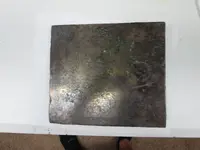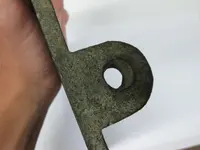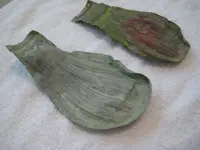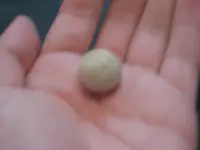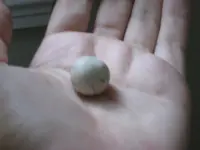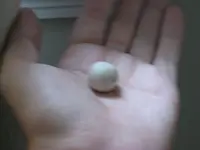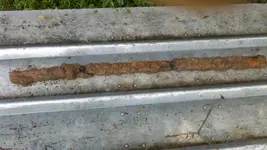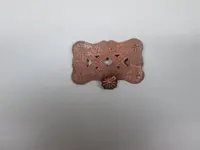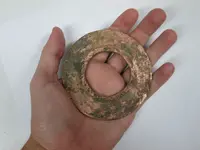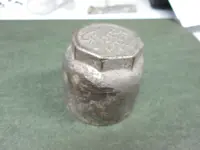KONO
Full Member
- Joined
- Jul 2, 2013
- Messages
- 190
- Reaction score
- 66
- Golden Thread
- 0
- Detector(s) used
- Garrett ACE 350
- Primary Interest:
- All Treasure Hunting
- #1
Thread Owner
Ladies and Gentleman,
The Moment you have all been waiting for, the commencement of The Official Louisiana Plantation Dig Thread.
Let the digging Commence...
Historical Background:
The Plantation is located in South Louisiana, the current property is a conglomerate of several plantations and there sub-facilities. The Plantations were conglomerated over the years and according to Conveyance Records, at least 10 Transactions occurred from the 1840's until the early 1890's (though the property reached its current size in the 1880's) and the Property has been continuously owned ever since (120 years). The Plantation's operations ranged from the French Colonial Period in the 18th Century until the early 1920's after which the property was leased for farming and livestock. The leases to farmers were ended in the 1960's. The Plantation is currently a Private Hunting Estate and most recently a Dig Site. The Plantations initially produced Sugar Cane and then converted to Rice Production sometime from the 1880's-1890's. There are believed to have been no fewer than 5 Plantations from various eras on the Property. Slaves were used on the Plantations and were freed after the Capture of New Orleans during the Civil War. Share Croppers worked the land from the time after the Civil War until the early 1920's. The History of the property is unique in consideration of the large number of transfers of land and conversions that took place. The Properties were sold and auctioned off frequently due to Bankruptcy, Mortgage interest, widows liquidating assets, The Civil War, and unknown reasons. The constant transfer of the Plantations caused many structures with their contents, tools, and all objects associated with the Plantations to be abandoned and disregarded. The Plantation is long since overgrown. Nearly all of the original Plantation implements are still in place, though weathered, buried or sitting in ruble. No complete buildings remain after years of Hurricanes and storms, although locations of the majority of former structures are known. Currently, at least 100 structure sites are known and have been explored. Each Plantation had its own Plantation Home, Slave Quarters, Sheds, Workshops, Livestock facilities (pins, sties, and corrals), Sugar Cane Houses (warehouse/storage), Sugar Cane Boilers, and other various structures. Several brick structures remain intact including A sugar cane boiler, and a brick structure where a large steam engine was mounted atop to pump water into a canal irrigation system with a paddle wheel. A Railroad passed through the Plantation and various remnants remain including: The raised slag Railroad bed, intact Telegraph Poles, Telegraph wire, Telegraph insulators, 100 year old cyprus fence post still in place, and railroad track of various length. The Plantation being of considerable size, utilized state of the art cultivation and processing techniques in its day. As of now, The Plantation is in the early stages of historical examination and digging that will surely take years to complete...
Historical Information is based upon:
-First-Hand Accounts of Ownership (from current owner) including: description of property when structures remained, and vast personal knowledge of property.
-Private Records
-Conveyance Records (incomplete research, only traced to 1840's; Conveyance Records provide: transfers of land and assets through various means, number and description of structures, manifest of slaves consisting of name and age, manifest of Plantation equipment (including all tools, machines, and wagons/carts), manifest of livestock, and production output numbers.
This Thread will serve as an exhibition to the Public, and a Catalog of our Finds.
The property has never been closely historically examined underground... Until Now.
The Moment you have all been waiting for, the commencement of The Official Louisiana Plantation Dig Thread.
Let the digging Commence...
Historical Background:
The Plantation is located in South Louisiana, the current property is a conglomerate of several plantations and there sub-facilities. The Plantations were conglomerated over the years and according to Conveyance Records, at least 10 Transactions occurred from the 1840's until the early 1890's (though the property reached its current size in the 1880's) and the Property has been continuously owned ever since (120 years). The Plantation's operations ranged from the French Colonial Period in the 18th Century until the early 1920's after which the property was leased for farming and livestock. The leases to farmers were ended in the 1960's. The Plantation is currently a Private Hunting Estate and most recently a Dig Site. The Plantations initially produced Sugar Cane and then converted to Rice Production sometime from the 1880's-1890's. There are believed to have been no fewer than 5 Plantations from various eras on the Property. Slaves were used on the Plantations and were freed after the Capture of New Orleans during the Civil War. Share Croppers worked the land from the time after the Civil War until the early 1920's. The History of the property is unique in consideration of the large number of transfers of land and conversions that took place. The Properties were sold and auctioned off frequently due to Bankruptcy, Mortgage interest, widows liquidating assets, The Civil War, and unknown reasons. The constant transfer of the Plantations caused many structures with their contents, tools, and all objects associated with the Plantations to be abandoned and disregarded. The Plantation is long since overgrown. Nearly all of the original Plantation implements are still in place, though weathered, buried or sitting in ruble. No complete buildings remain after years of Hurricanes and storms, although locations of the majority of former structures are known. Currently, at least 100 structure sites are known and have been explored. Each Plantation had its own Plantation Home, Slave Quarters, Sheds, Workshops, Livestock facilities (pins, sties, and corrals), Sugar Cane Houses (warehouse/storage), Sugar Cane Boilers, and other various structures. Several brick structures remain intact including A sugar cane boiler, and a brick structure where a large steam engine was mounted atop to pump water into a canal irrigation system with a paddle wheel. A Railroad passed through the Plantation and various remnants remain including: The raised slag Railroad bed, intact Telegraph Poles, Telegraph wire, Telegraph insulators, 100 year old cyprus fence post still in place, and railroad track of various length. The Plantation being of considerable size, utilized state of the art cultivation and processing techniques in its day. As of now, The Plantation is in the early stages of historical examination and digging that will surely take years to complete...
Historical Information is based upon:
-First-Hand Accounts of Ownership (from current owner) including: description of property when structures remained, and vast personal knowledge of property.
-Private Records
-Conveyance Records (incomplete research, only traced to 1840's; Conveyance Records provide: transfers of land and assets through various means, number and description of structures, manifest of slaves consisting of name and age, manifest of Plantation equipment (including all tools, machines, and wagons/carts), manifest of livestock, and production output numbers.
This Thread will serve as an exhibition to the Public, and a Catalog of our Finds.
The property has never been closely historically examined underground... Until Now.
Last edited:



